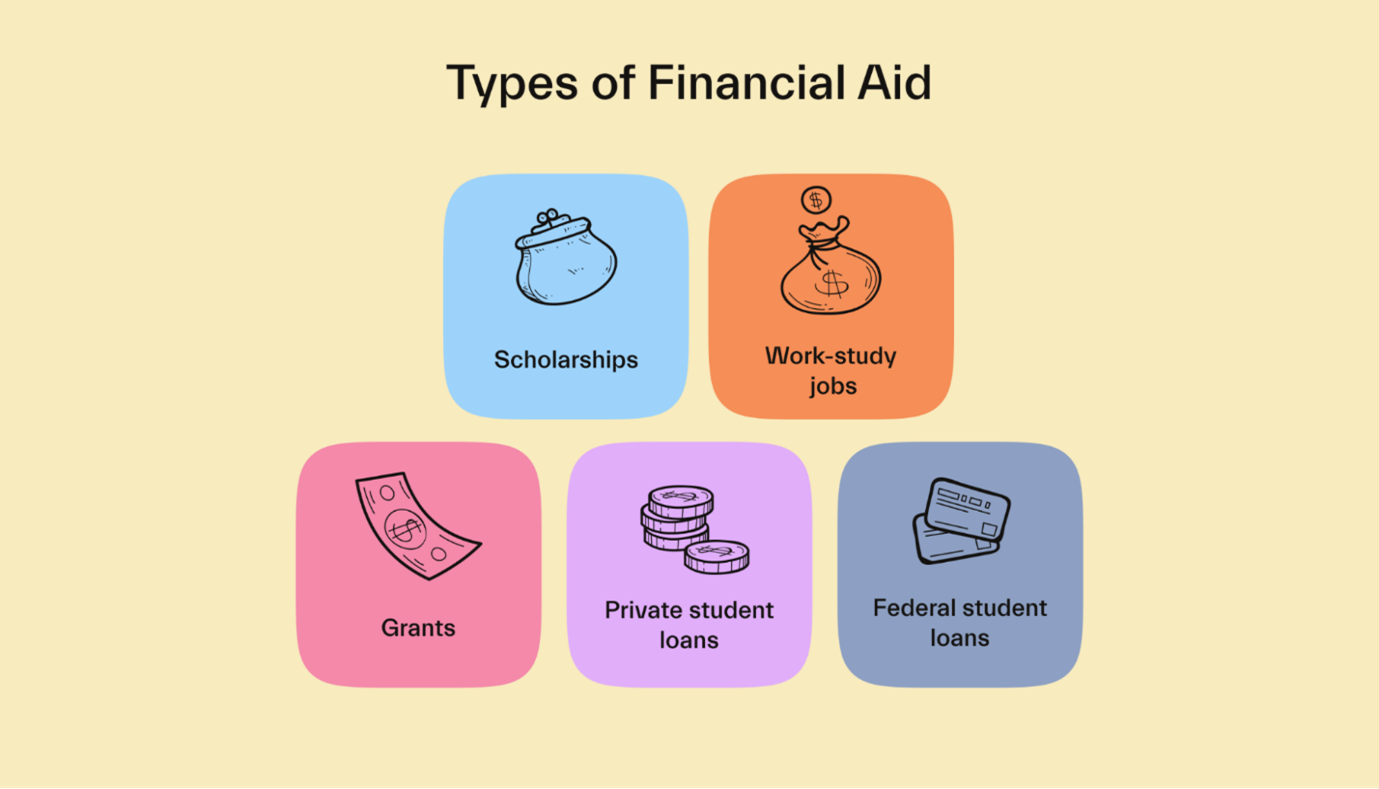Student-athletes with their immense skill and talent may often face a unique set of challenges and opportunities while striving for higher education. Beyond the rigorous demands of training and competition, one significant hurdle is financial they face is how to fund education while dedicating substantial time to athletic pursuits. Fortunately, a plethora of financial aid options exists to support these students, ranging from scholarships and grants to private funding. This article delves into the various types of financial aid available to student-athletes, providing insights and tips to navigate this complex landscape effectively.
Understanding Financial Aid for Student-Athletes

Financial aid stands as a pivotal support system for student-athletes, acting as a game-changer in their collegiate journey by opening doors to opportunities once clouded by financial uncertainty. It encompasses a broad spectrum of resources, including grants, scholarships, and loans, each meticulously designed to ease the burden of educational expenses. This assistance is crucial for balancing the rigorous demands of athletic training with academic aspirations, ensuring that financial constraints do not hinder a student-athlete’s path to success.
Scholarships, the cornerstone of this support system, are particularly noteworthy. They are awarded based on either merit, recognizing exceptional athletic or academic achievements, or financial need, aiding those who might otherwise be unable to afford higher education. Unlike loans, scholarships do not require repayment, offering a stress-free foundation upon which athletes can build their future. These awards are comprehensive, covering not just tuition, but also room and board, textbooks, and in some instances, living costs. This extensive coverage allows student-athletes to concentrate fully on their sports and studies without the looming worry of financial debt.
The variety of sources from which financial aid is available, including federal and state governments, educational institutions, and private organizations, ensures that there are numerous avenues for support. This multifaceted approach to funding reflects the collective effort to nurture talent and hard work, making the dream of a balanced and enriching college experience a reality for student-athletes across the nation, including those benefiting from grants for Hispanics in America. Through this support system, talented individuals are afforded the chance to excel in their academic and athletic pursuits, proving that with the right resources, achieving greatness on and off the field is within reach.
Types of Financial Aid

1. Athletic Scholarships
Collegiate athletic scholarships offer direct financial support to student-athletes, rewarding them for their athletic skills and potential to enhance a college’s sports teams. These scholarships are primarily merit-based, focusing on the athlete’s current performance and future potential. Athletic scholarships vary in scope, covering partial to full educational costs, including tuition, room, board, and sometimes additional expenses related to their sports. The level of support provided can significantly differ, reflecting the institution’s commitment to its sports programs and the value it places on individual athletes.
2. Federal Grants
Federal grants, such as the Pell Grant, cater to students requiring financial assistance based on their family’s economic situation, as determined through the FAFSA. These grants are especially advantageous for student-athletes from economically disadvantaged backgrounds, providing essential financial support without being linked to athletic achievements. This form of aid underscores the government’s commitment to making higher education accessible to all, ensuring that financial barriers do not impede a student-athlete’s educational journey.
3. State-Sponsored Aid

State-sponsored financial aid encompasses a variety of programs, including scholarships, grants, and tuition waivers, tailored specifically for residents. These aid programs are often designed with particular eligibility requirements in mind, such as state residency, academic excellence, and in some cases, athletic performance. This localized support reflects states’ dedication to nurturing talent within their borders, offering student-athletes additional opportunities for financial assistance based on a range of criteria.
4. Institutional Aid
Institutional aid from colleges and universities provides another layer of financial support, distinct from athletic scholarships. This aid can be need-based, merit-based, or a combination thereof, aimed at supporting the broader student body, including student-athletes. Institutional aid plays a critical role at schools where athletic scholarships are limited, ensuring that financial resources are available to support a diverse range of students, including those who excel in academics, community service, or possess specific talents.
5. Private Funding
Private funding from organizations, foundations, and businesses offers scholarships and grants based on a spectrum of criteria, including but not limited to athletic prowess and academic achievements. This type of funding serves as a vital supplement to other financial aid sources, closing the gap in financial needs for student-athletes. It represents the private sector’s investment in the future of young athletes, providing them with additional resources to pursue their educational and athletic goals without the burden of financial stress.
Tips for Seeking Financial Aid

- Start Early: Begin the search for financial aid as soon as possible. Early preparation allows student-athletes to identify a wide range of opportunities and meet crucial application deadlines.
- Utilize Resources: High school counselors, college financial aid offices, and athletic coaches can be invaluable resources in identifying financial aid opportunities. Online databases and scholarship search platforms also offer comprehensive listings of available aid.
- Complete the FAFSA: Filing the Free Application for Federal Student Aid is a critical step for all students, including athletes. The FAFSA determines eligibility for federal grants and can influence the awarding of institutional and state aid.
- Apply Widely: Don’t limit applications to just one or two sources. Apply for as many scholarships and grants as possible to maximize potential funding sources. Remember, small scholarships can add up to cover a significant portion of educational expenses.
- Highlight Your Strengths: When applying for scholarships, emphasize not only athletic achievements but also academic accomplishments, leadership experiences, and community involvement. A well-rounded application can stand out in a competitive field.
- Maintain Eligibility: Stay informed about the eligibility requirements for each form of financial aid and ensure compliance. This includes maintaining academic standards and adhering to any regulations governing collegiate athletes.
- Negotiate and Appeal: If offered an athletic scholarship, understand that there may be room for negotiation. Additionally, if initial financial aid offers are insufficient, don’t hesitate to appeal. Provide updated information and make a compelling case for additional support.
Conclusion
Navigating the financial aid landscape as a student-athlete requires diligence, persistence, and a proactive approach. By understanding the various types of aid available and utilizing a strategic approach to seeking financial support, student-athletes can secure the resources needed to pursue both their academic and athletic goals. With the right preparation and support, the dream of competing at the collegiate level while earning a degree can become a reality, setting the stage for success both on and off the field.



